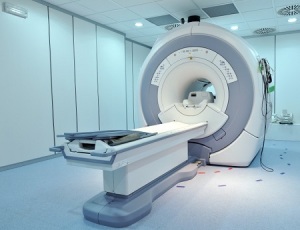by
John R. Fischer, Senior Reporter | October 25, 2021

Polish researchers have generated the first three-photon PET scan on their Jagiellonian-PET (J-PET) scanner
Polish researchers have generated the first three-photon PET scan, which may potentially increase specificity of cancer diagnoses and help clinicians determine degrees of malignancy without the need for surgical biopsy.
Also known as positronium imaging, the technique is capable of creating a positron-electron bound state that heightens the sensitivity of PET scans to the point where they can detect tissue alterations at molecular levels. Such information could shed light on early-stage disease progression, according to the researchers at Jagiellonian University Institute of Physics.
Unlike conventional PET scanners, which only produce images based on two photons, positronium imaging works through the annihilation of three photons. This annihilation process is what makes the scan highly sensitive.



Ad Statistics
Times Displayed: 2839
Times Visited: 27 Fast-moving cardiac structures have a big impact on imaging. Fujifilm’s SCENARIA View premium performance CT brings solutions to address motion in Coronary CTA while delivering unique dose saving and workflow increasing benefits.
“We believe that the positronium image will enable better distinction between the healthy, cancer and inflammatory tissues, and that it will enable us to determine the degree of a tumor’s malignancy,” said Ewa Stępień, the head of medical research in the group,
according to Physics World.
Positronium imaging opens up the potential for new PET imaging applications for cancer diagnostics and the possibility of testing the symmetry between matter and antimatter, say the researchers.
Stępień and her colleagues developed the method using the Jagiellonian-PET (J-PET) scanner, which is made up of 192 plastic scintillator strips. The aim of the project is to develop a device capable of scanning the entirety of a patient’s body at the same time. They produced the three-photon PET image using phantoms made up of tumor samples and adipose tissue excised from two patients.
In addition to determining various levels of malignancy, the technique could be applied to studying the dynamics of metabolism and drug distribution. Positronium imaging is also expected to play a role in the emerging field of theranostics, which is focused on developing solutions for simultaneous detection and treatment of diseases. The researchers plan to study those possibilities more closely at the JU Centre for Theranostics.
Their findings were published in
Nature Communications.

